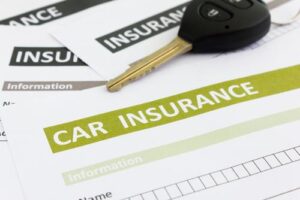
In the United States, all cars come equipped with seatbelts. It has become a normal expectation, and many states have compulsory requirements for wearing them. It is an irrefutable fact that seatbelts save lives, but they also cause their own injuries.
The hope is that the injuries caused by a seatbelt are less severe than the injuries they prevent, and most of the time, that is the case. While we may appreciate that we are less injured from the seatbelt than if we were ejected from the car, John Foy & Associates realize that it doesn’t change the fact that we are injured. If someone else’s negligence has caused your accident and you sustained injuries, even from the seatbelt, you may benefit from an experienced Atlanta car accident lawyer.
Understanding the Function of Seatbelts
Seatbelts have been instrumental in preventing deaths, primarily through preventing head injury and ejection from the vehicle. The initial development of a lap belt as a seatbelt was introduced in 1894, and the lap belt became standard in the 1960s. In the early 1970s, the 3-point harness we know now became standard, and a recent seat belt injury study reports that accident deaths decreased by 50% with this introduction.
The principal that saves so many lives is the same one that causes injury. That is, distributing force throughout the strongest points of your body. When used correctly, the most force is directed to your clavicle, chest wall, and pelvis.
Because the risk of injury is well known and commonly expected, manufacturers have made adjustments. One of these, according to the Insurance Institute of Highway Safety(IIHS), is a sensor that will allow additional information if the force on the seat belt exceeds a certain level. This extra give in the belt can further dissipate the force and decrease the chance of severe injury.
Get the strong arm
Seat Belt Injuries
Injuries from a seatbelt can vary greatly depending upon positioning and whether the occupant is using it appropriately. While appropriate usage should limit injury to the shoulder, chest wall, and pelvis, inappropriate use can result in more dire injuries. Some of these may include:
- Internal bleeding
- Neck and spine injury (from poor placement)
- Bruising and lacerations along the belt path
- Organ damage
Injuries sustained from a seat belt are so well known and expected that any of them are referred to as Seatbelt Syndrome. With appropriate usage, injuries are not typically life-threatening.
Symptoms of Broken Ribs from a Seatbelt
If your seatbelt has caused broken ribs, one of the things you will notice is bruising along the chest wall. However, just because you have a bruise does not mean you have broken ribs. Some additional indicators of broken ribs are:
- Pain and tenderness when the area is palpated
- Pain with a deep breath or inability to take a deep breath
- Pain in the chest when turning or bending
- Crackling sound with pressure
In a medical setting, a broken rib is called a rib fracture, regardless of the severity. If you have been in an accident and are experiencing these symptoms, you should seek immediate evaluation by a medical provider. Any difficulties breathing should be treated as a life-threatening emergency and seen in the emergency department.
Diagnosing a Broken Rib
Your physician typically starts with a physical exam to diagnose a broken rib. They will look for pain, bruising, or swelling that indicates a rib fracture and determine what kind it is. Sometimes, they may use imaging like a CT scan or X-ray to confirm or check for any other internal injury or organ damage.
Stress Fracture
This type of fracture is typical of overuse. A stress fracture will typically start as bone bruises, and if they are not given enough time to recover, it can turn into a minor fracture. These fractures are less common in car accidents and more typical of a sports or work injury.
Avulsion Fracture
This fracture is another that is more associated with overuse and quick changes of direction. An Avulsion fracture occurs when a piece of bone attached to connective tissues breaks away from the main bone. It can take several weeks to a few months to heal.
Comminuted Fracture
A comminuted fracture is a bone break. These fractures are common in car accidents and refer to a bone broken in at least two places. A comminuted fracture frequently requires surgery to reset and may take years to heal.
Displaced vs. Non-displaced Fracture
These terms refer to whether or not the bone has moved out of alignment. A displaced rib fracture is one where the bone has moved out of position at the break and is more likely to require surgery to correct. A non-displaced fracture may not require intervention and is more likely to be treated at home.
Complications of a Broken Rib
Sometimes, a broken rib does not become any more eventful than the accident that caused it. However, complications can arise, and they can be life-threatening. Your ribs’ purpose is to protect vital organs, and when there is damage, it may cause damage to:
- Heart
- Lungs
- Liver
- Kidney
- Spleen
A common reason for this type of complication is if the impact that broke the bone pushed it into one of the organs. This can cause a laceration or puncture. Additionally, pain with deep breaths can make you more susceptible to developing complications like pneumonia.
After a Seat Belt Injury
If a seat belt has caused an injury, particularly one severe enough to break ribs, you are likely to have sustained other injuries. To minimize these injuries, it is important to always wear your seatbelt appropriately, with the seatbelt on your shoulder and hips, not your neck and stomach. Sometimes, even when we do everything right, there are still accidents.
You should not have to navigate your personal injury claim alone. Whether you are dealing with an insurance company after a car accident or other lawyers because of a product defect, you can contact us for a free case consultation to discuss your legal options. At John Foy and Associates, we believe in treating all our clients with respect and dignity to help them recover after an injury.
404-400-4000 or complete a Free Case Evaluation form





